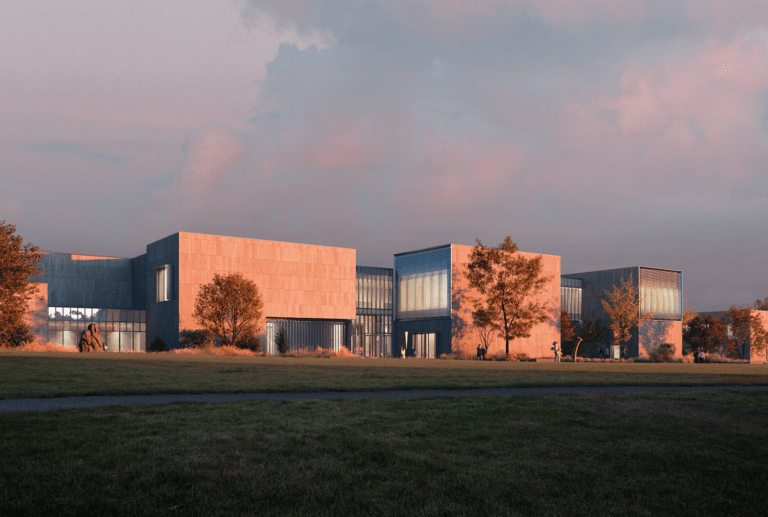Penn State has officially broken ground on its new Palmer Museum of Art, according to the university.
The new Palmer Museum of Art will directly neighbor the Arboretum’s botanic gardens. Construction will notably eliminate the Arboretum’s free parking lot.
Penn State expects to open the new free-admission museum by the fall of 2023. Once its doors are open, it will be the largest art museum collection between Pittsburgh and Philadelphia.
The new 71,000-square-foot facility will substantially boost Penn State’s ability to showcase the Palmer’s ever-growing collection. The new facility will allow the museum would let to display between 7 and 8% of the works in its collection. The existing Curtain Road museum allows for only 3 to 4% to be displayed.
Although the collection has grown by 185%, the Curtain Road museum’s display spaces have not increased.
“Advancing the arts and the humanities is a strategic priority for the University, and through this project, it is our desire to elevate Penn State and central Pennsylvania as a hub for the arts,” Penn State President Eric Barron said. “This new state-of-the-art facility situated alongside our world-class arboretum will go a long way toward turning that vision into a reality.”
Prior to approving final plans and funding in May, some trustees said the current museum’s building systems have “exceeded their useful life” due to age. They cited struggling heating, ventilation and air conditioning systems as particularly troublesome since optimal conditions are required to keep works intact. Museum leaders said the building has experienced “significant damage” due to water penetration issues.
Additionally, the location near the Arboretum is expected to help the new museum accommodate more guests. Some trustees said that the current museum’s location in the heart of campus makes it less accessible to guests, particularly schools, due to a lack of nearby parking.
“As a leading arts destination and cultural gateway to the university, the Palmer looks forward to sharing more of its exceptional works and to fostering greatly enhanced opportunities to experience art, nature, connection and inspiration through this visionary new building,” said museum director Erin M. Coe.
Though no tuition or general fund money will be used for project, seven trustees who voted against the plan in May said they worried about the timing and funding with the university still dealing with the financial impacts of the COVID-19 pandemic.
To date, more than $20 million has been raised toward the museum’s $85 million budget. About $62 million of the project’s cost will be funded by borrowing, with $4 million in annual debt service paid for from the university’s share of Big Ten media revenue, which is more than $50 million each year. When the conference last negotiated an increase in its media rights deals, university presidents agreed each school should use $4 million annually for difficult-to-fund campus projects.
The new museum will have two wings clad in local stone. The larger wing on the west side is for the galleries and museum support spaces, while the east wing will have administrative and educational facilities.
The wings have open space between them offering a view directly into the Arboretum and are connected on the second level by an enclosed walkway.
The museum, which will be LEED-certified, will work with the Arboretum to complement the “greater landscape” through interlocking pavilions and “dynamic learning and creative spaces.” It will be the only Big Ten museum fully integrated with a full-scale arboretum.
The current Palmer Museum of Art, which celebrates its 50th year in 2022, will remain open until Penn State’s new location is completed. Although its museum will close, the building itself will still be used for unannounced university purposes.
Additional reporting by Geoff Rushton.



